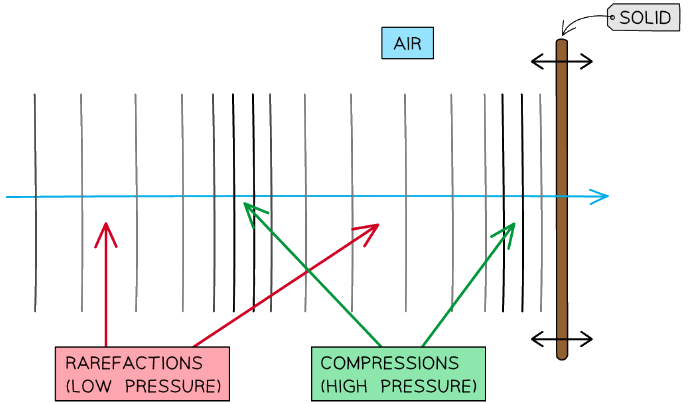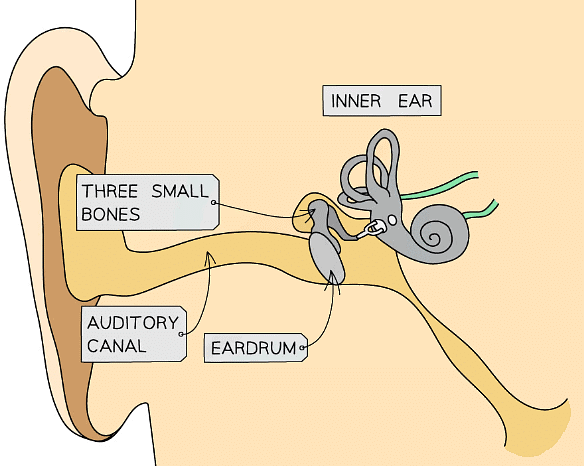Grade 10 Exam > Grade 10 Notes > Physics for Grade 10 > Sound Waves
Sound Waves | Physics for Grade 10 PDF Download
Sound Waves in Solids
- Sound waves are vibrations of air molecules
- When a sound wave comes into contact with a solid those vibrations can be transferred to the solid
- For example, sound waves can cause a drinking glass to vibrate
- If the glass vibrates too much the movement causes the glass to shatter
- Sound is an example of a longitudinal wave, hence it consists of:
- Compressions - regions of higher density
- Rarefactions - regions of lower density
 Sound is a longitudinal wave consisting of compressions and rarefactions - these are areas where the pressure of the air varies with the wave
Sound is a longitudinal wave consisting of compressions and rarefactions - these are areas where the pressure of the air varies with the wave
- These compressions and rarefactions cause changes in pressure, which vary in time with the wave
- Therefore, sound is a type of pressure wave
- When the waves hit a solid, the variations in pressure cause the surface of the solid to vibrate in sync with the sound wave
 When sound waves hit a solid, the fluctuating pressure causes the solid to vibrate
When sound waves hit a solid, the fluctuating pressure causes the solid to vibrate
Sound Waves in the Ear
- Sound waves can be heard by human beings because sound waves are transferred from the air to the solid components of the ear
- In the case of the human ear, the sound waves are transferred by two main solid components:
- The eardrum which is made of tissue and skin
- Three small bones
- The sound wave travels down the auditory canal towards the eardrum
- The pressure variations created by the sound wave exert a varying force on the eardrum causing it to vibrate
- The vibration pattern of the sound waves creates the same pattern of vibration in the eardrum
- The eardrum vibration is transferred to the three small bones
- The vibration of these small bones then transfers the vibrations to the inner ear
- In the inner ear, nerve cells detect the sound and send a message to the brain giving the sensation of sound
 The human ear is made up of several components which turn sound waves into signals which the brain can interpret
The human ear is made up of several components which turn sound waves into signals which the brain can interpret
- The transmission of sound to the human ear only works over a limited range of frequencies
- This limits the range of sound frequencies a human can hear
- The range of frequencies a human can hear is 20 Hz to 20 000 Hz
The document Sound Waves | Physics for Grade 10 is a part of the Grade 10 Course Physics for Grade 10.
All you need of Grade 10 at this link: Grade 10
|
122 videos|150 docs|40 tests
|
Related Searches
















